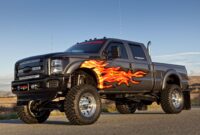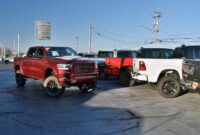The Apex of Warehouse Efficiency: Navigating the World of the Raymond Swing Reach Truck cars.truckstrend.com
In the relentless pursuit of maximizing storage density and operational efficiency, modern warehouses constantly seek innovative solutions. Among the most pivotal advancements in material handling equipment is the Raymond Swing Reach Truck. More than just a forklift, this specialized machine represents a paradigm shift in how goods are stored and retrieved in high-density environments. By combining the agility of a reach truck with the unique pivoting capabilities of a turret, the Raymond Swing Reach Truck enables businesses to unlock unprecedented levels of space utilization and productivity in very narrow aisles (VNAs), making it an indispensable asset for contemporary logistics and distribution centers.
Understanding the Raymond Swing Reach Truck: Core Features and Mechanics
The Apex of Warehouse Efficiency: Navigating the World of the Raymond Swing Reach Truck
At its heart, the Raymond Swing Reach Truck is engineered for precision and performance within confined spaces. Unlike conventional forklifts that require wide aisles for maneuvering and turning, the swing reach truck operates in aisles as narrow as 6 feet (approximately 1.8 meters), often guided by wire, rail, or laser systems. Its defining feature is the turret head, which allows the forks to pivot 90 degrees to the left or right without the truck itself needing to turn. This means an operator can pick or put away pallets on either side of the aisle simply by rotating the forks, significantly reducing cycle times and eliminating the need for complex maneuvers.
Key mechanical components and features typically include:
- VNA Design: Specifically built to operate in extremely tight aisles, maximizing cubic storage space.
- Articulating Forks (Turret Head): The unique ability of the forks to rotate 180 degrees (90 degrees left/right from center) without moving the truck body.
- Reach Mechanism: In addition to the swing, the forks can extend forward to access pallets deep within racking.
- High Mast Capabilities: Raymond swing reach trucks are designed to lift loads to impressive heights, often exceeding 30 feet (9 meters) and even up to 50 feet (15 meters) in some configurations, enabling vertical space utilization.
- Operator Compartment: Most commonly a "man-up" design, where the operator elevates with the forks, providing direct line of sight to the pallet and rack, enhancing safety and accuracy.
- Guidance Systems: Integral for safe and efficient VNA operation, these include wire guidance (following an embedded wire in the floor), rail guidance (steel rails bolted to the floor), or optical/laser guidance.
- AC Motor Technology: Provides smooth, powerful, and energy-efficient operation with minimal maintenance.

The Unrivaled Benefits of Deploying a Raymond Swing Reach Truck
The strategic deployment of a Raymond Swing Reach Truck offers a multitude of benefits that directly impact a warehouse’s bottom line and operational efficiency:

- Maximized Space Utilization: This is the primary advantage. By reducing aisle widths, warehouses can increase their storage capacity by 30-50% or more within the same footprint, delaying or even eliminating the need for costly facility expansions.
- Increased Productivity and Throughput: The ability to access pallets from both sides of an aisle without turning the truck, combined with high lift speeds, drastically reduces cycle times for put-away and retrieval, leading to higher overall throughput.
- Enhanced Safety: Operating in guided aisles minimizes the risk of collisions with racking or other equipment. The "man-up" design offers superior visibility, and advanced safety features like obstacle detection further protect operators and inventory.
- Reduced Labor Costs: Higher productivity means fewer trucks and operators are needed to handle the same volume of goods, leading to long-term labor savings.
- Energy Efficiency: Modern AC-powered models are highly energy-efficient, offering extended battery life and reduced charging requirements compared to older DC models.
- Versatility: Capable of handling a wide range of pallet sizes and types, these trucks are adaptable to various racking systems, including selective, double-deep, and drive-in racks.

Operating a Raymond Swing Reach Truck: A Practical Guide
Operating a swing reach truck is a specialized skill that requires comprehensive training and adherence to strict safety protocols.
- Mandatory Training and Certification: All operators must undergo rigorous training specific to the Raymond Swing Reach Truck model they will be using. This includes classroom instruction on machine mechanics, safety regulations, and practical hands-on training in a controlled environment. Certification is a legal requirement in most regions.
- Pre-Operation Checks: Before each shift, operators must perform a thorough pre-operation inspection, checking battery levels, tire condition, brake functionality, hydraulic systems, and all safety features (lights, horn, safety interlocks).
- Aisle Navigation: In VNA environments, operators rely heavily on guidance systems. It’s crucial to maintain a safe speed and be aware of load stability. The "man-up" feature allows the operator to elevate with the load, ensuring optimal visibility for precise pallet placement and retrieval.
- Pallet Handling with the Turret Head: The core skill involves mastering the turret head. The operator positions the truck centrally in the aisle, extends the forks to the desired depth, rotates the forks 90 degrees left or right to align with the pallet, then engages the load. Smooth, controlled movements are paramount to prevent product damage or instability.
- Load Stability: Always ensure the load is stable and within the truck’s capacity. Uneven or improperly stacked loads can pose significant safety risks, especially at height.
- Battery Management: Proper battery charging, maintenance, and rotation practices are essential for maximizing battery life and ensuring continuous operation.
Key Considerations for Investing in a Raymond Swing Reach Truck
Acquiring a swing reach truck is a significant investment that requires careful planning and evaluation:
- Warehouse Suitability: Is your current or planned warehouse layout conducive to VNA operations? This includes aisle widths, floor flatness (critical for high-lift stability), clear overhead heights, and existing racking systems.
- Throughput Requirements: Analyze your daily or hourly pallet movement needs. While swing reach trucks excel in density, a very high-volume operation might also consider automated solutions or specialized order pickers in conjunction.
- Pallet Characteristics: Consider the weight, dimensions, and stability of your typical palletized loads. Ensure the chosen model’s capacity and fork configuration are appropriate.
- Budget and ROI: While the initial cost can be higher than conventional forklifts, calculate the long-term return on investment (ROI) based on increased storage capacity, reduced labor, and improved efficiency.
- Maintenance and Support: Raymond has a robust dealer network and excellent parts availability. Evaluate the local service capabilities and maintenance contracts offered.
- Operator Ergonomics and Comfort: Since operators spend long shifts in these trucks, features like adjustable controls, comfortable seating (or standing platforms), and climate control options can significantly impact productivity and reduce fatigue.
Types and Configurations of Raymond Swing Reach Trucks
Raymond offers a range of swing reach truck models designed to meet diverse operational needs. While specific model numbers evolve, they generally fall into categories based on capacity, lift height, and specialized features:
- Capacity Variants: Models are available with varying load capacities, typically ranging from 2,500 lbs to 4,500 lbs (approx. 1,130 kg to 2,040 kg), catering to different product weights.
- Lift Height Options: The mast configurations vary significantly, allowing for maximum lift heights from standard 20-30 feet up to extreme heights of 50 feet or more for ultra-high-density storage.
- Man-Up vs. Man-Down: While most swing reach trucks are "man-up" (operator elevates with the load for visibility), some specialized models or older versions might have a "man-down" design where the operator remains at ground level.
- Cold Storage Compatibility: Specialized models are available with heated cabs and components designed to operate efficiently and reliably in sub-zero freezer environments.
- Automation Ready: Newer models often come with features that facilitate integration with Warehouse Management Systems (WMS) and can be part of semi-automated or fully automated VNA solutions.
Maximizing Performance: Tips and Best Practices
To extract the maximum value from your Raymond Swing Reach Truck investment:
- Implement a Robust Maintenance Program: Regular preventative maintenance by certified technicians is crucial for longevity and peak performance.
- Continuous Operator Training: Even certified operators benefit from refresher courses and advanced training to maintain proficiency and adapt to new operational challenges.
- Optimize Racking and Aisle Design: Ensure your racking is perfectly aligned, floors are level, and aisles are free of obstructions to allow for smooth and efficient operation.
- Integrate with WMS/WCS: A well-integrated Warehouse Management System (WMS) or Warehouse Control System (WCS) can optimize travel paths, manage inventory, and assign tasks efficiently, minimizing empty travel and maximizing throughput.
- Strategic Battery Management: Implement a proper battery charging and rotation schedule to extend battery life and ensure trucks are always ready for operation. Consider lithium-ion batteries for faster charging and longer run times if suitable for your operation.
Challenges and Solutions
While highly beneficial, deploying swing reach trucks can present certain challenges:
- High Initial Investment:
- Solution: Conduct a detailed ROI analysis to quantify savings in space and labor. Explore financing options or consider purchasing certified pre-owned units from reputable dealers.
- Strict Floor Requirements:
- Solution: Ensure your warehouse floor meets the necessary flatness and levelness specifications during the design or renovation phase. Invest in floor surveys and remediation if needed.
- Operator Skill and Training:
- Solution: Prioritize comprehensive, ongoing training. Consider incentive programs for skilled operators and maintain a robust safety culture.
- Potential for Aisle Congestion:
- Solution: For very high-volume operations in limited VNA, optimize traffic flow with WMS-directed tasking, or consider dedicated pick/put-away aisles.
Sample Estimated Pricing for Raymond Swing Reach Trucks
It’s important to note that the actual price of a Raymond Swing Reach Truck can vary significantly based on model, capacity, lift height, specific features (e.g., cold storage package, automation readiness), optional accessories, dealer location, market conditions, and whether it’s new or used. The table below provides estimated price ranges for illustrative purposes only and should not be considered definitive quotes. Always obtain a direct quote from an authorized Raymond dealer for accurate pricing.
| Model Series (Illustrative) | Key Features & Applications | Estimated New Price Range (USD) | Estimated Used Price Range (USD) |
|---|---|---|---|
| Entry-Level VNA | Lower lift heights (up to 30 ft), standard capacity (2500-3000 lbs), basic controls. Ideal for smaller VNA operations. | $80,000 – $110,000 | $30,000 – $60,000 |
| Mid-Range/Standard VNA | Common lift heights (30-45 ft), standard capacity (3000-4000 lbs), enhanced ergonomics, optional features. Most versatile. | $110,000 – $150,000 | $50,000 – $90,000 |
| High-Capacity/Extreme Lift | Highest lift heights (45+ ft), higher capacity (4000-4500 lbs), advanced features (cold storage, automation-ready). For specialized, high-density needs. | $150,000 – $200,000+ | $80,000 – $120,000+ |
Disclaimer: These prices are highly variable and are for estimation purposes only. They do not include additional costs such as shipping, installation, battery and charger, training, extended warranties, or maintenance contracts. Prices are subject to change without notice. Please contact an authorized Raymond dealer for a precise quote tailored to your specific requirements.
Frequently Asked Questions (FAQ) about Raymond Swing Reach Trucks
Q1: What is the primary advantage of a Raymond Swing Reach Truck over a traditional forklift?
A1: Its primary advantage is maximizing storage density. It allows for significantly narrower aisles (as narrow as 6 feet), meaning you can fit more racking and therefore more pallets into the same warehouse footprint.
Q2: How narrow can aisles be with a Raymond Swing Reach Truck?
A2: Aisle widths can typically be as narrow as 6 feet (approximately 1.8 meters), depending on the specific model, load dimensions, and guidance system used.
Q3: Do operators need special training to operate a swing reach truck?
A3: Yes, absolutely. Operators must undergo specialized, comprehensive training and certification for swing reach trucks due to their unique operation in very narrow aisles and at extreme heights.
Q4: What’s the difference between a swing reach truck and a standard reach truck?
A4: A standard reach truck extends its forks forward to pick/place loads but requires the truck to turn or reposition to access pallets on either side of an aisle. A swing reach truck has a turret head that pivots the forks 90 degrees left or right, allowing it to pick/place loads on both sides of a very narrow aisle without moving the truck body.
Q5: Can Raymond Swing Reach Trucks operate in cold storage or freezer environments?
A5: Yes, Raymond offers specialized swing reach truck models designed and equipped for reliable operation in cold storage and freezer environments, often featuring heated cabs and specialized components.
Q6: What are the floor requirements for operating a swing reach truck?
A6: Swing reach trucks require very flat and level floors to ensure stability and safe operation, especially when lifting loads to high elevations. Floor flatness (Ff) and levelness (Fl) specifications are crucial and typically more stringent than for conventional forklifts.
Q7: What does "man-up" mean in the context of a swing reach truck?
A7: "Man-up" refers to the design where the operator’s compartment elevates with the forks and the load. This provides the operator with an unobstructed, direct view of the pallet and the rack location at all heights, significantly improving accuracy and safety during high-level put-away and retrieval.
Conclusion
The Raymond Swing Reach Truck stands as a testament to engineering ingenuity in the material handling industry. By offering unparalleled space optimization, enhanced productivity, and a commitment to operator safety, it empowers businesses to transform their warehouse operations. While the initial investment requires careful consideration, the long-term benefits in terms of increased storage capacity and operational efficiency often yield a significant return. For any organization looking to maximize its existing footprint and streamline its high-density storage and retrieval processes, the Raymond Swing Reach Truck is not just a piece of equipment; it’s a strategic advantage, paving the way for more agile, efficient, and profitable logistics operations.




